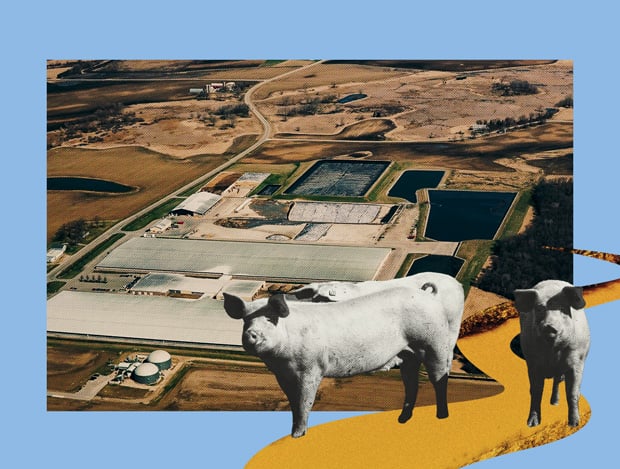Suing EPA to Get Factory Farm Waste Out of Lake Erie
Published Aug 5, 2025

A federal judge approved FWW intervention in a lawsuit challenging an inadequate cleanup plan for Lake Erie while denying industry groups’ attempt to do the same.
In an early win, a federal judge approved Food & Water Watch, Lake Erie Waterkeeper, and Waterkeeper Alliance to intervene in a lawsuit challenging a grievously inadequate cleanup plan for Lake Erie’s serious pollution problem. We will join the City of Toledo, Lucas County, and the Environmental Law and Policy Center to argue that the Environmental Protection Agency’s (EPA) approval of the Western Lake Erie Total Maximum Daily Load (TMDL) is unlawful because it fails to hold factory farms accountable for their major role polluting the Great Lake. In a second early win, the court denied factory farm industry groups’ motions to intervene.
A TMDL is a pollution “diet” required for every impaired, or polluted, body of water under the Clean Water Act. TMDLs set a cap on pollution and lay out a cleanup plan to reduce pollution at the source. Lake Erie is plagued by phosphorus pollution — the legacy of decades of unregulated runoff from hundreds of factory farms. Excess phosphorus causes harmful algae blooms in lakes, which can soak up available oxygen, creating “dead zones” where fish and other aquatic species cannot survive.
It can also contaminate drinking water, posing a serious public health threat for the 12.5 million people that rely on Lake Erie for drinking water. In 2014, the city of Toledo faced just such a drinking water crisis when a harmful algae bloom contaminated the city’s drinking water supply, rendering water for 400,000 residents unsafe to drink for nearly three days.
After decades of refusing to address the problem as the Clean Water Act requires and a series of lawsuits forcing action, EPA and state regulators adopted a woefully deficient TMDL that lets Big Ag off the hook and leaves Lake Erie and nearby communities to suffer the consequences. Adopting a cleanup plan for the Lake should have been a step in the right direction. TMDLs are designed to ratchet down pollution, enabling impaired waterways to recover. Here, that would mean requiring Clean Water Act permits for factory farms and putting strict limits on their discharges.
However, this TMDL ignores the fact that most of the lake’s phosphorus pollution is coming from factory farms. In fact, the plan places no restrictions whatsoever on any of the nearly 800 factory farms in the area. That didn’t stop EPA from giving the plan its stamp of approval. Now, we are in court to strike down the deficient plan and require EPA to create a new plan that abides by the Clean Water Act and holds factory farms accountable.
This would have powerful local and even national effects. It would lead to a cleaner Lake Erie and safer drinking water for communities like the City of Toledo. And it could set important legal precedent affirming that factory farm discharges are subject to the Clean Water Act — and regulators cannot unlawfully exploit regulatory loopholes to say otherwise — strengthening federal oversight of this industry.
Food & Water Watch has a long history of enforcing the Clean Water Act and fighting back against industry attempts to weaken our bedrock environmental protections. We will not stand by and allow Trump’s EPA to continue giving factory farms a free pass to pollute one of our country’s most important freshwater resources.
Learn more about how we’re fighting to hold EPA and factory farms accountable for cleaning up Lake Erie by reading our complaint. The case is Board of Lucas County Commissioners et al. v. U.S. Environmental Protection Agency (EPA), case number 3:24-cv-00779.
Enjoyed this article?
Sign up for updates.
TO TOP


